Tires function as essential but frequently ignored elements which make up vehicles. Every distance traveled depends on tires which establish the fundamental elements of safety together with performance and comfort. Every vehicle owner should understand tire origins and construction methods as well as tire size codes and proper maintenance because it helps with better decision-making while preventing unsafe situations. Let’s dive into a detailed guide.
1. Origins of the Tire: From Leather Bands to Pneumatic Revolution (Source)
✅ Pre-1800s – Solid & Iron Tires
· The term "tire" originated from the use of iron bands and wooden wheels protected by leather or iron rims which were used in early carts and wagons. Wheelwrights heated metal bands until they shrank to fit over wooden spokes.
✅ Mid-1800s – Solid Rubber
· The development of vulcanized rubber allowed solid rubber tires to become available to the market. These tires delivered better riding comfort than wood/iron versions yet they proved to be heavy while providing harsh experiences to passengers.
✅ 1845 – Robert W. Thomson Invents Pneumatic Tire
· Thomson received the first patent for an inflatable air tire which included a tubular design but people did not adopt it because of insufficient market interest. (Source)
✅ 1888 – John Boyd Dunlop’s Bicycle Breakthrough
· Dunlop created practical pneumatic tires for bicycles after watching his son experience a bumpy ride. Multiple racing victories by Willie Hume in 1889 using the new tires marked the beginning of the inflatable tire era for all vehicles.
✅ Early 1900s – Automotive Expansion
· The 1906 invention by Louis Perlman led to demountable rim designs which enabled motorists to perform tire changes. (Source)

2. Tire Development Through the 20th Century
✅ Bias-ply Tires
· The initial automotive tires contained inner tubes and fabric-bias carcases which used ply cords that crossed at different angles. Durable, but rigid.
✅ Radial Tires
· The introduction of radial tires in the 1940s/’50s brought tires with perpendicular cord arrangements which led to better ride comfort and extended tread life according to Michelin who first developed this technology in 1946. (Source)
✅ Synthetic Rubber and Advanced Tread Techniques
· The introduction of synthetic rubber by DuPont during the 1930s transformed both durability and performance capabilities. The development of tread patterns reached its peak when manufacturers aimed to achieve both traction and water dispersal.
3. Tire Sizing: Decoding Width, Aspect Ratio, Load, and Speed
Each modern tire includes a code printed on its sidewall that reveals its history through notation examples like P215/65R16 95H.
| Code Part | Meaning |
| P / LT / ST | Tire class: Passenger, Light Truck, or Special Trailer |
| 215 | Section width in millimeters |
| 65 | Aspect ratio (sidewall height is 65% of width) |
| R | Radial construction |
| 16 | Rim diameter in inches |
| 95 | Load index: 95 = 1,389 lbs of load per tire |
| H | Speed rating (up to 130 mph) |
Additional Markings:
· DOT + 4 digits: Week/year of manufacture.
· 3PMSF snowflake or M+S: All-season/winter capability.
· Max Load/PRESS: Indicates maximum tolerance, not the ideal operating pressure.
4. Famous Tire Brands Through History
Some brands stand at the forefront:
· Goodyear – Founded 1898, invented tubeless tires, global leader. (Source)
· Firestone – Established 1900, major F1 and IndyCar supplier. (Source)
· BF Goodrich – 1896 pioneer, first US car tire provider, later acquired by Michelin. (Source)
· Michelin – Introduced removable and run-flat tires, led radial technology in 1946. (Source)
· Dunlop – From 1889 bicycle tires to modern performance and motorcycle models. (Source)
These brands shaped the standards we rely on today.

5. Safety Guidelines: Ensuring Tire Longevity and Performance
· Regular tire pressure checks should be performed every month while using manufacturer-recommended inflation levels because low pressure increases resistance and may result in tire blowouts while high pressure reduces traction.
· Check the tire tread depth for replacement when it reaches 2/32″ or shows visible wear bars.
· Rotate tires every 5,000–7,000 miles to ensure even wear.
· All tires older than 6 years must be replaced regardless of tread condition.
· Proper tire balance together with alignment functions help prevent wear issues while enhancing vehicle handling.
Always check your owner manual or door jamb sticker for tire pressure information instead of using the tire's maximum pressure mark as your operating reference.
6. Why a Quality Tire Inflator Matters
A reliable tire inflator proves essential for accurate tire inflation needs. The ETENWOLF Vortex S6 Heavy Duty Tire Inflator provides:
· The Vortex S6 has a 19,200 mAh battery and a maximum pressure regulation of 160PSI, which suits vehicles such as cars, light trucks, and electric vehicles.
· ±1 PSI standard accuracy with auto shut-off.
· Dual motors & cold-air tech—fast, cool, and reliable.
· The device includes a rechargeable battery with USB output capabilities for portability.
· Integrated LED light for late-night emergencies.
The Vortex S6 allows you to maintain proper tire health with ease to extend tire lifespan and improve performance and safety.

✅ Final Takeaway
Automotive tires have experienced major transformations starting with leather bands and iron hoops followed by coded radial tires. The fundamental truth about tire care remains the same because it both protects lives and saves financial resources. Using the ETENWOLF Vortex S6 as a smart tool alongside understanding tire size and load capacity and construction ensures safe and efficient driving experiences.
Master tire sizing, keep your tires properly inflated, and let the ETENWOLF Vortex S6 Heavy Duty Tire Inflator be your reliable partner—helping you drive with confidence on every road.

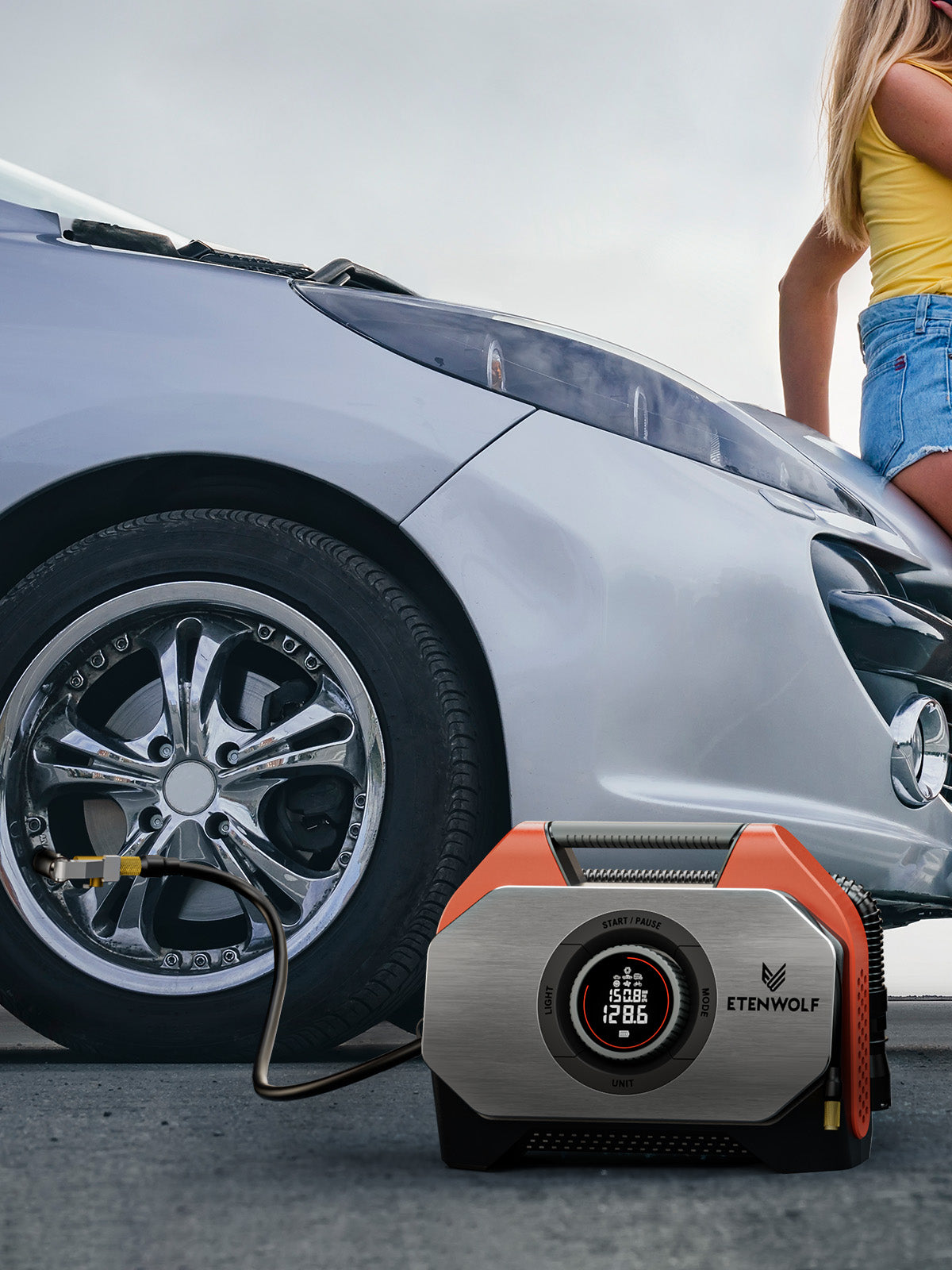

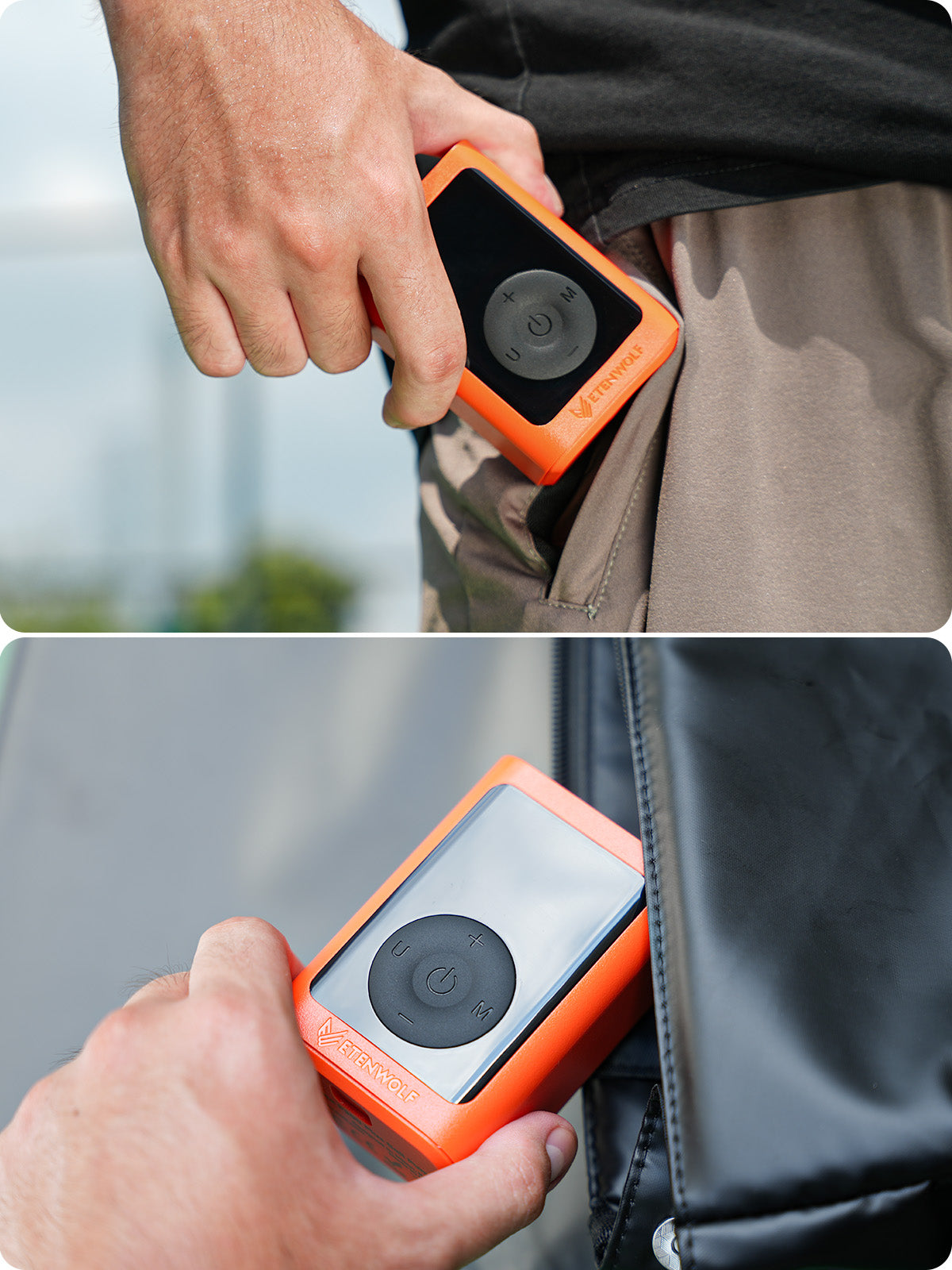
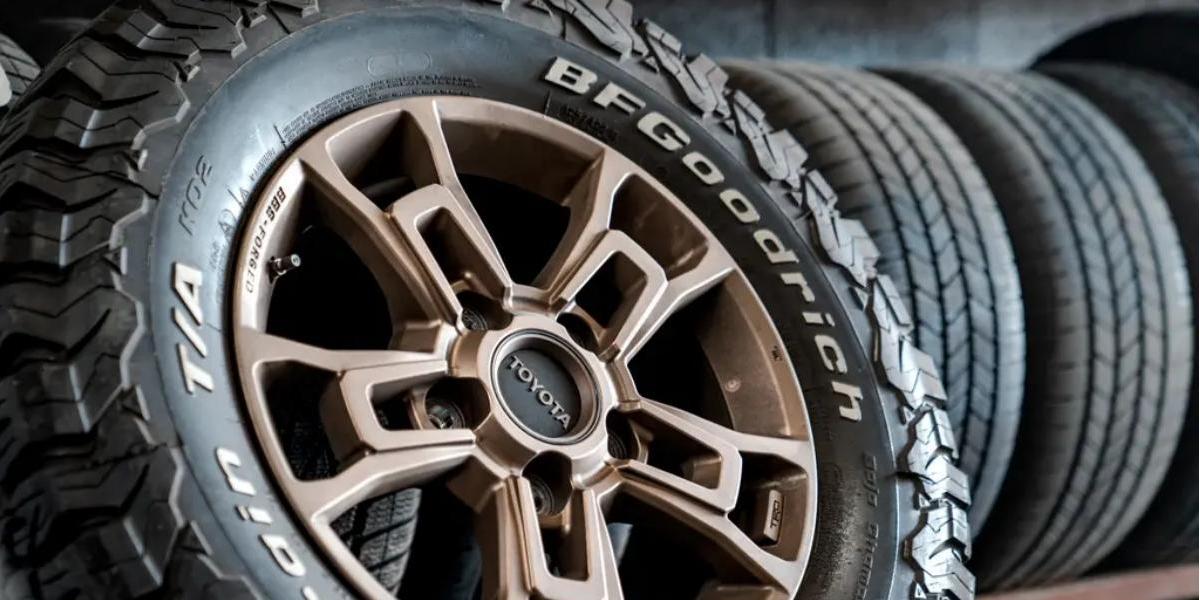
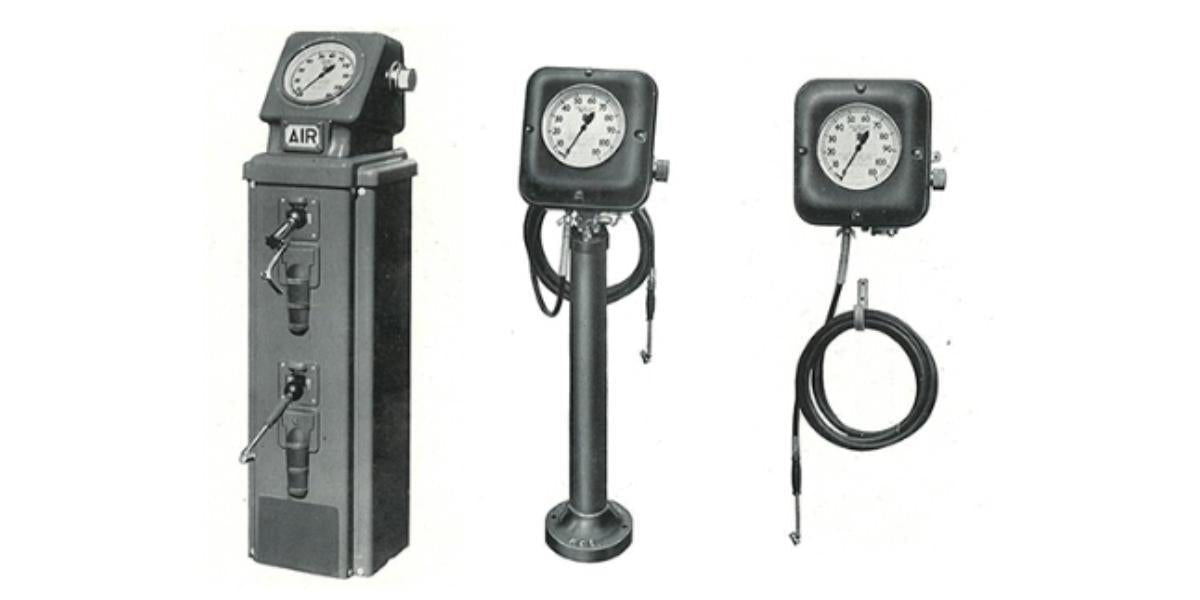
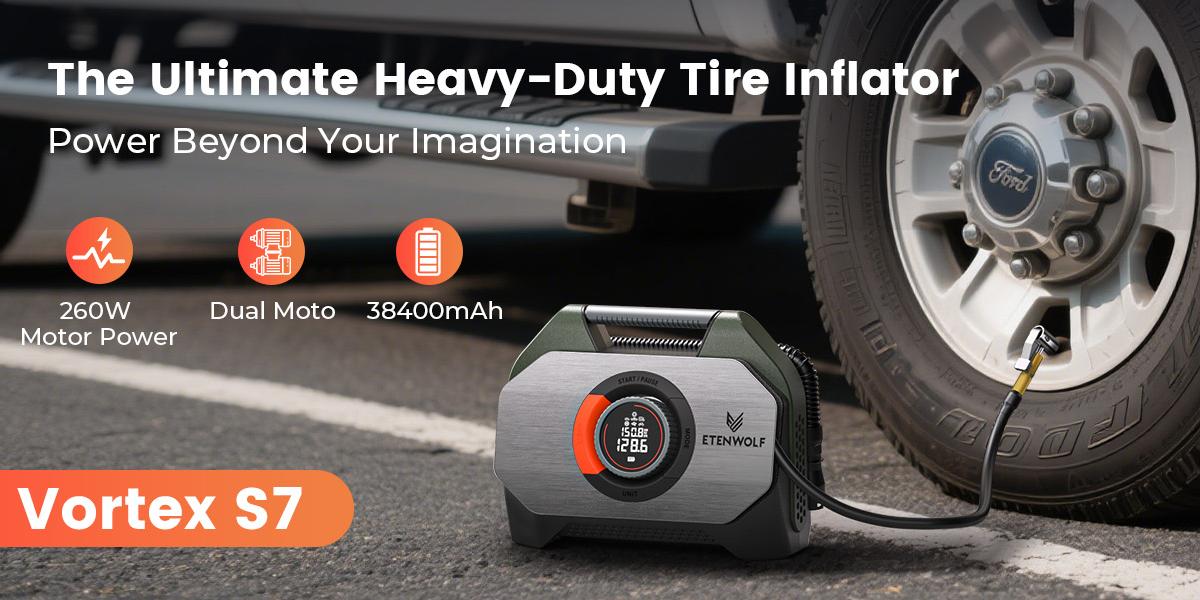
Leave a comment
All comments are moderated before being published.
This site is protected by hCaptcha and the hCaptcha Privacy Policy and Terms of Service apply.